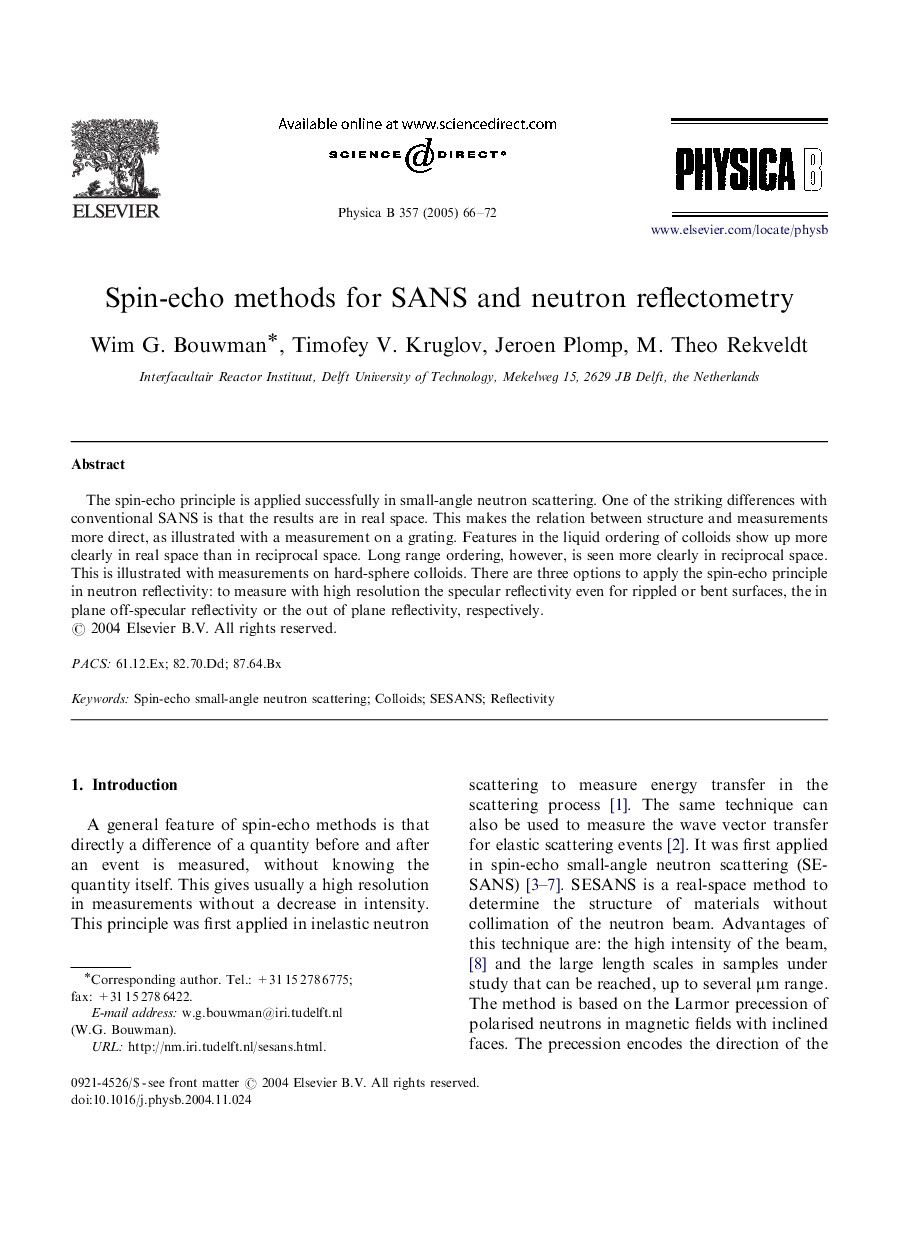| Article ID | Journal | Published Year | Pages | File Type |
|---|---|---|---|---|
| 9837860 | Physica B: Condensed Matter | 2005 | 7 Pages |
Abstract
The spin-echo principle is applied successfully in small-angle neutron scattering. One of the striking differences with conventional SANS is that the results are in real space. This makes the relation between structure and measurements more direct, as illustrated with a measurement on a grating. Features in the liquid ordering of colloids show up more clearly in real space than in reciprocal space. Long range ordering, however, is seen more clearly in reciprocal space. This is illustrated with measurements on hard-sphere colloids. There are three options to apply the spin-echo principle in neutron reflectivity: to measure with high resolution the specular reflectivity even for rippled or bent surfaces, the in plane off-specular reflectivity or the out of plane reflectivity, respectively.
Related Topics
Physical Sciences and Engineering
Physics and Astronomy
Condensed Matter Physics
Authors
Wim G. Bouwman, Timofey V. Kruglov, Jeroen Plomp, M. Theo Rekveldt,
